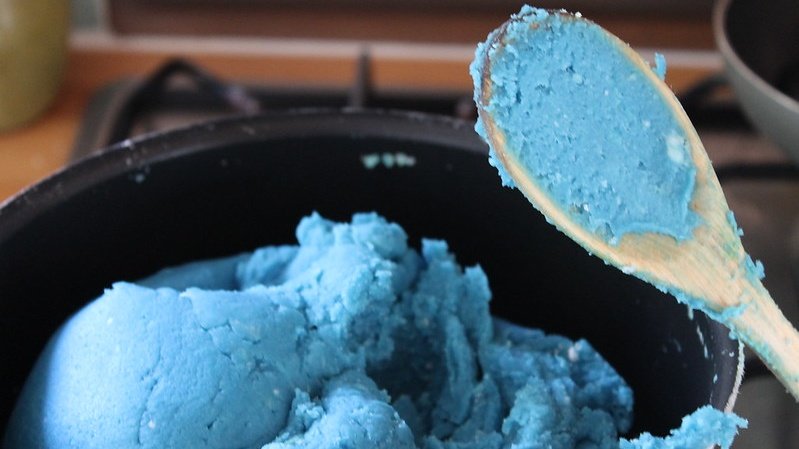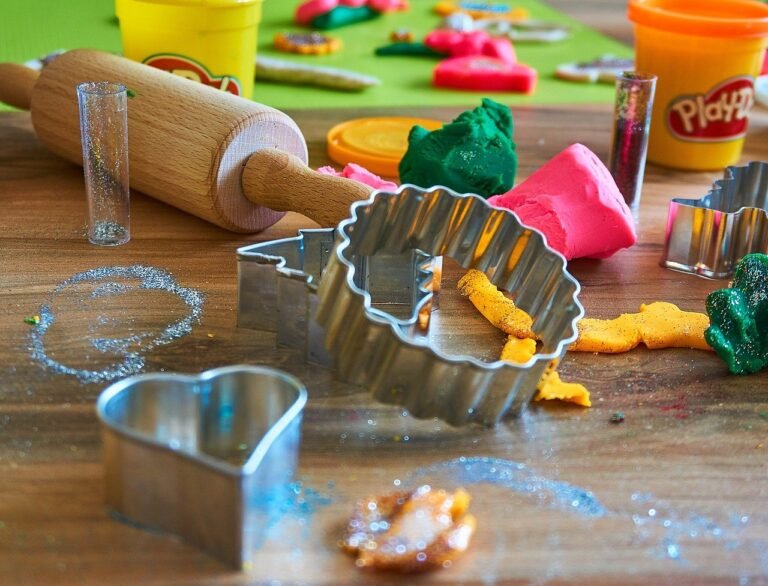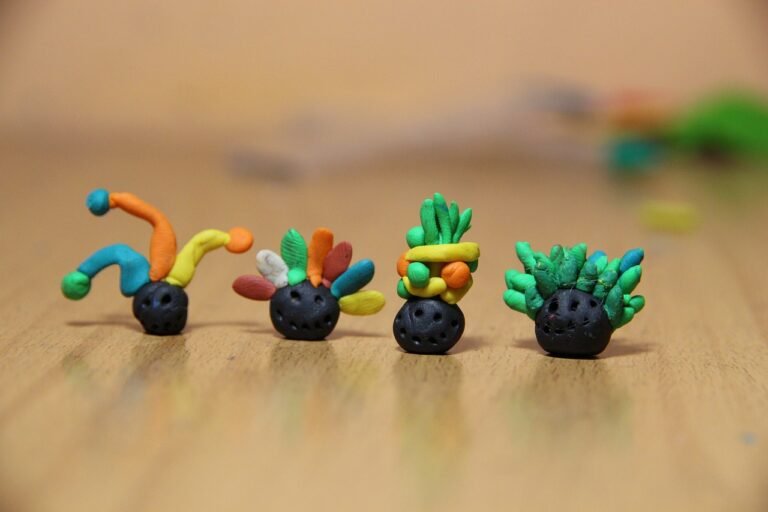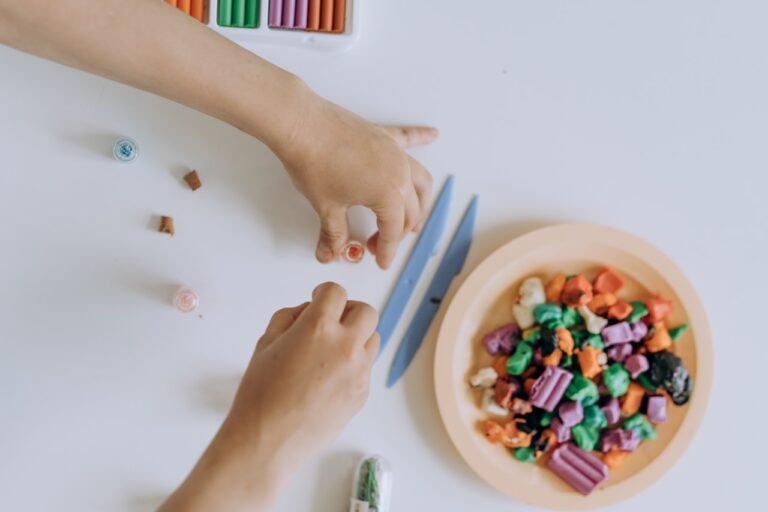Is no Cook Playdough Safe? Recipes for beginners!
The good thing about cooked playdough is that it does not require kneading. By cooking your homemade playdough, you reduce the risk of your children getting sick from contaminated raw flour. Is it safe to allow your toddler to play with no-cook playdough?
Milling grains into flour does not kill bacteria. This means raw flour may contain harmful bacteria. Therefore, it is safer to cook flour before adding it to other ingredients in playdough. Microwave the flour for one minute at 160 degrees Fahrenheit or more to destroy bacteria.
No-cook playdough is easier and quicker for kids to make. Children prefer No-cook playdough as it does not scald their tender hands.
Is It Possible To Prepare Homemade Playdough Without Cooking?
Add 1/2 a cup of salt to 2 cups of flour in a large bowl. Add 2 tablespoons of cream of tartar to the mixture. Pour 2 tablespoons of vegetable oil into the bowl. You can use any kind of oil here. If you want a dough that is nontoxic and safer, cooking oil is a smart choice.
Stir in the boiling hot water and combine the ingredients until a dough forms. You can make them in different colors by dividing the dough into equal portions and rolling them into balls. Make small wells inside each ball by punching a hole through the middle.
Fill wells within the balls with gel food dye. In order to achieve a variety of colors, you can mix dye colors together when dripping them into the bowls. Knead the dye into the dough well. Make your own playdough without cooking by watching this video:
How Can I Make Natural Playdough?
Using the same recipe, combine 1 cup flour, 1/2 cup salt, 2 teaspoons of cream of tartar, 1 tablespoon of any food-based oil, and 5 drops of natural food coloring in 1 cup of warm water.
What Are The Benefits Of Cooked Playdough?
Cooked playdough lasts longer than uncooked playdough. The rubbery texture and longevity of cooked playdough are far better than uncooked. Baking the cooked dough enables its inside to harden much faster before the outside burns.
How Can I Cook Homemade Playdough?
Mix flour, salt, and cream of tartar together in a bowl and set aside. Combine the water and food coloring in a medium saucepan made of a non-reactive material. Stir oil into flour mixture to combine. Stir it over medium heat for about 2-3 minutes until it thickens.
Turn the dough out onto a clean surface and knead for about one minute until it is smooth. After that, you can store it in your refrigerator in an airtight container.
How Does Cooked Playdough Differ From Uncooked Playdough?
You can leave cooked playdough out uncovered for hours without experiencing any long-term damage. Playdough without a cook will develop a dry and crumbly coating if you leave it out for hours.
Because no-cook playdoughs are soft by nature, they are easy to break up, leaving bits and crumbs all over the place.
How Will Cream Of Tartar Affect Playdough?
This acidic chemical compound produces a soft texture and preserves playdough. This gives it that springy and rubbery feel, which makes it more fun for kids to play with. You can store homemade playdough for up to three months.
What If I Do Not Have The Cream Of Tartar?
Instead of cream of tartar, you can use lemon juice. You can also use baking soda, vinegar, or cornstarch as alternatives. For the most effective portion ratio, use one teaspoon vinegar or lemon juice per half teaspoon cream of tartar.
Is It Possible To Make Playdough Without Hot Water?
Water can either be boiling hot or cold. Other ingredients are the same, but the amounts may vary. Recipes with cold water tend to be grainier and dryer than those with hot water.
My Playdough Is Still Sticky: What’s Wrong With It?
It is sticky because your playdough has too much moisture and not enough flour. Flatten the dough out and place the sticky side of the dough on the bottom of the pot for a short time. Keep flipping it back and forth until it no longer sticks to the bottom.
How Does Homemade Playdough Differ From Store-Bought?
These are softer and squishier than those found in stores. If you store it in a zip-lock bag or an airtight container in the refrigerator, it will last fresh for months. Making playdough at home is cost-effective and produces a lot of fun. It is even possible to add your favorite color or scent to the dough.

Is Homemade Playdough Safe?
Small children often explore the world around them with their mouths. Despite not being meant to be eaten, playdough is non-toxic and will not harm children in small quantities. Homemade playdough contains more salt, which can cause health problems if children eat too much.
Overeating playdough may cause a child to get sick, show one or more symptoms like vomiting and nausea, irritability, headaches, abdominal pain, constipation, lethargy, fatigue, and thirst. Here is a good article on our website which will answer your questions: Is Play-Doh Safe to Eat?
How Do I Treat A Child That Has Eaten Too Much Playdough?
To deal with this situation, remove the playdough from them and wipe their mouth out with a soft, moist, and clean cloth. Give them some water to drink to dilute the high salt concentration. If symptoms persist, consult your doctor.
Playdough Safety Precautions
Using the right edible ingredients in the right proportion will ensure the safety of your homemade natural playdough. Playdough becomes bitter when you add more salt and baking soda.
Check whether your child is allergic to any of the ingredients you use, such as wheat flour, powdered milk, peanut butter, or food dye. If your child has celiac disease or an intolerance to gluten, you should make homemade playdough with gluten-free flour.
If your child experiences symptoms of allergy like skin rashes, wheezing, hives, or congestion after handling playdough, consult a doctor.
How Old Should My Children Be To Use Playdough?
The recommended age is two years and older. But sometimes, you will find that your child is eager to put playdough in their mouths even after they are two. If so, wait until they are older and can follow your verbal commands.
In either case, whether the playdough is homemade or commercial and whether it is for a child who is two or more, it is wise to watch the child closely. So they will not put large quantities in their mouths.







